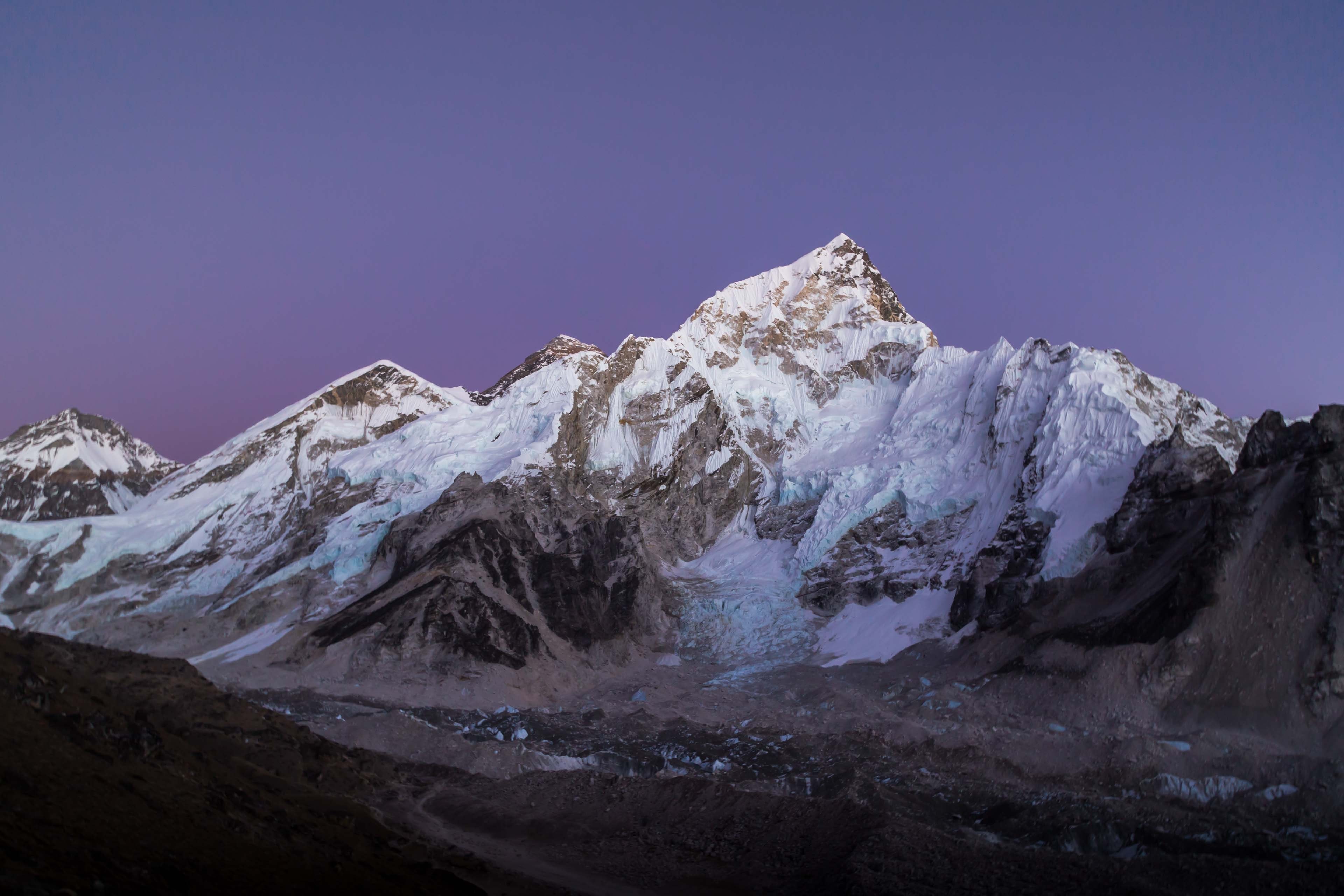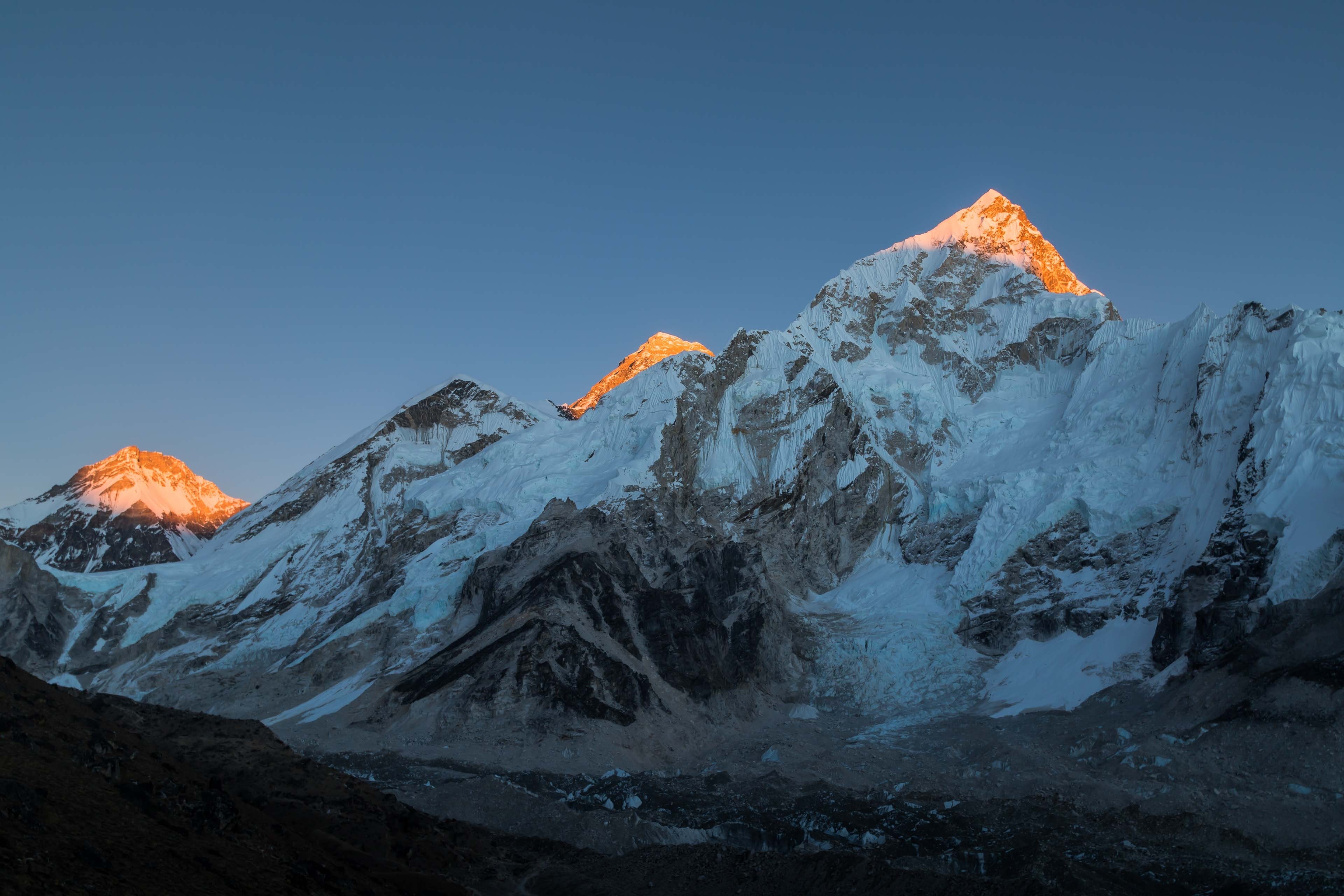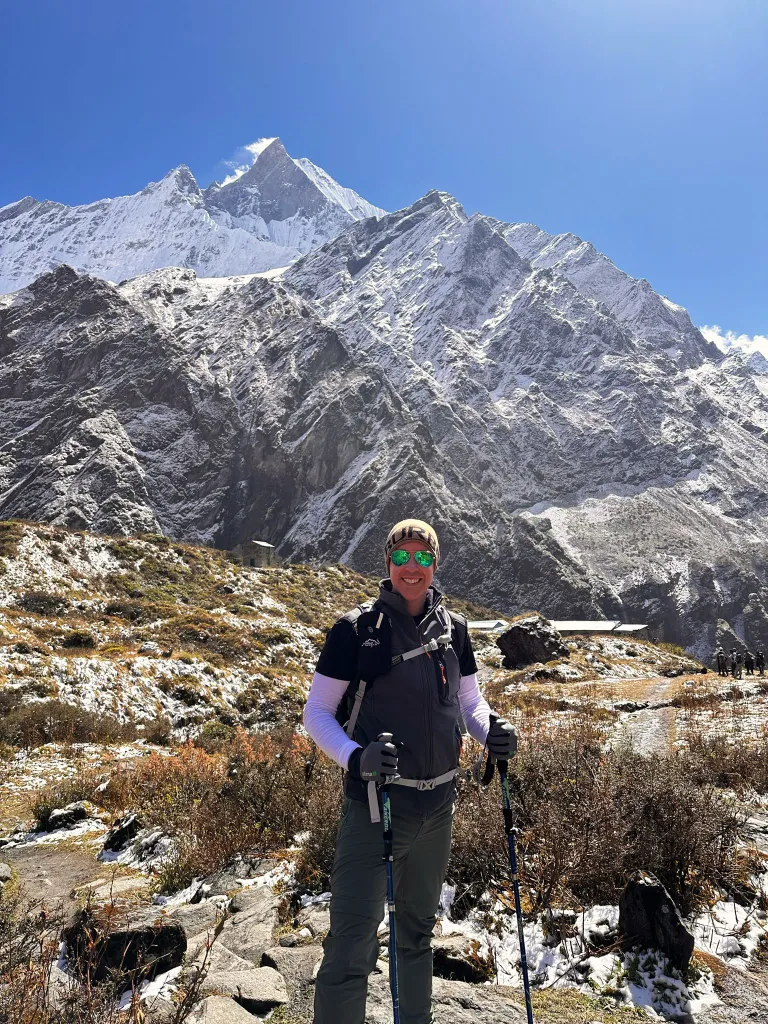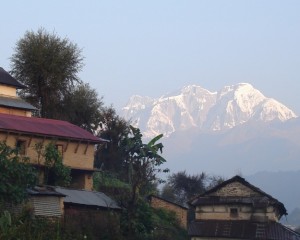How To Obtain Permits For Island Peak climbing?
Introduction
Island Peak, situated at a height of 6,189m, is also classified as a Group B trekking peak by the Nepal Mountaineering Association (NMA). The association claims that Island Peak requires one climbing permit and one trekking permit. Depending on different seasons, the climbing permit cost ranges from USD 70 to USD 250 per person and the local permit cost for trekking is USD 20, which is also issued by NMA.

Islands Peak, which is also named ‘Imja Tse’, is one of the moderately easy peaks acclaimed by the alpine standards. The Island Peak is one of the most sought climbing destinations for many climbers. It is often attempted to climb with little or no alpine experience.
The Island Peak Climbing is much more easily navigated by the documents and processes of acquiring the permits. You can get more details about the permits and information with the research and information you can get. You can check out all the needed information that can be further useful for obtaining an Island Peak Climbing permit below.
Required Permits for Island Peak Climbing
Climbing Island Peak requires certain documents and permits. For this, you have to make your preparations beforehand to obtain the necessary documents. It can be listed as
- Passport-sized photos
- Photocopy of your passport
- Nepali currency (NPR) to pay for the permit
- Application forms
- Travel insurance (includes helicopter evacuation)
For climbing Island Peak, you must process the NMA-issued climbing permit beforehand, so you should reach out to a trekking agency in Nepal to issue the permit. With the help of a trekking agency, you can easily get a permit before planning your trip. Let’s check out some of the permits fee needed.
Nepal Mountaineering Association (NMA) Permit Fee
Island Peak climbing has a separate cost marked by the Nepal Mountaineering Association (NMA). The cost differs as per the season changes. The cost of climbing the Island Peak during its peak season in the time of Spring season is USD 250. The mountain is mostly full during this season due to a huge number of fellow climbers in these seasons.
Besides the spring season, you can also attempt to climb the mountain in the Autumn season. The cost of climbing the peak is USD 125 during this season when you will find stable weather conditions with great views of the snow-capped mountains. You can look for other off-seasons if you love climbing in a quiet atmosphere.
After Spring and Autumn seasons, you can take the chance for the summer and winter seasons for climbing. The cost in this season is less as the season is named off-season. The cost ranges from USD 70 during this season.

Sagarmatha National Park Entry Permit
As climbing Island Peak means entering the Sagarmatha National Park area, you will require a Sagarmatha National Park entry permit. For this, the cost of entering differs per nationality. The cost for SAARC nationals is Rs. 1500 (USD 15) whereas Its Rs 3000 (USD 30) for foreign nations.
Local Area Permit
For climbing Island Peak, a local area permit is also required. As you’ll have to enter the premise of various municipalities, a local permit is required that may cost around USD 20. You can also call for the local area permit from Lukla after your arrival. This won't be a huge problem for you if you travel with a trekking agency as they will get the permit ready for you.
Garbage Deposit Cost
Besides the entry permits and costs, you’ll have to pay for the Garbage Deposit Cost while climbing Island Peak. The Garbage Deposit fee for all 27 NMA peaks including the Island Peak is USD 500. The amount is refundable, once you return from the trip. The cost is levied initially to make sure that the tourists and visitors do not litter the trails, and dispose of the garbage in the proper place.
Trekking Permits Vs Climbing Permits
There are several trekking permits and climbing permissions needed for excursions in Nepal. These permits contribute to the preservation and protection of the local ecosystem. The trekking information management system (TIMS) cards are required to trek to various sections in Nepal.
A TIMS card is not necessary for trekking in the Everest zone. To enter the area, you simply need a Sagarmatha national park permit and a local area permit. This can be easily obtained from the Pasang Lhamu Rural Municipality. Also, your nationality will determine how much your permit will cost, whereas SAARC nationals will receive special reductions.

Trekking can be done in a group or as a FIT (Free Individual Trekker) also. You must Keep in mind that "Restricted Areas" is completely prohibited. A specifically restricted area permit from the Department of Immigration is required to trek in these off-limits zones.
You will need climbing permits if you want to climb peaks in Nepal. Depending on the mountain peak and the time of the climb, the climbing licenses change. The cost of these climbs is determined by the Nepal Mountaineering Association (NMA) which has been mentioned above already. You must know that the money from this peak-climbing charge supports local environmental preservation efforts.
How To Obtain This Permit?
You can make the application for Sagarmatha national park permit application from the Nepal Tourism Board's office located in Kathmandu. A TIMS card is not necessary for a hike in the Everest region, as you can apply for one here. If you think to get the permit in Kathmandu, you should go to Nepal Tourism Board which is situated just 15 minutes away from Thamel.
You can visit the office from 10:00 to 17:00 on Sunday through Friday, with a lunch break from 13:00 to 14:00.You must be in groups of at least two or be accompanied by a certified trekking guide through the trek. Island Peak Climbing is the best option for you if you are a beginner and looking for a new experience.

You must get the permit before you take the adventure. Interested trekkers also can apply for permits at the Department of Immigration after completing all the paperwork. You can book with Nepal Vision Treks to get any permit without any huge hassles. We promise to obtain all necessary permits for climbing the Island peak.
Important Tips Regarding The Permits
- In mountain climbing, you must abide by the rules and regulations as soon as you enter national parks or conservation areas that are protected.
- The permits for the island peak are not transferable or refundable.
- You must get the permit placed safely as they are quite important. The permits are checked by personnel during your climb.
- You may get fined or legally charged if you take any actions against these rules.
- Some permits are also available in the Nepal Tourism Board’s office whereas entry permits are issued and obtained from the entry points of the area.
- You cannot trek alone in the areas that are restricted areas. You should trek with a guide or in a group in these areas.
- Keep in mind that, trekkers should not indulge in any anti-social activity against the norms of society.
- Trekkers should trek only on the designated route as per the Trekking Permit.
Best Time For Island Peak Climbing
Island Peak Climb is ideal in almost all seasons but best in Autumn and Spring season. The best time to climb the Island Peak is from March to May, the spring season with many climbers flocking to the region. In the Spring Season, the natural trails, greenery, flora, and fauna makes the climb even better.
After the spring season, the autumn season from October is also great due to the weather and scenic vista of the mountains. In this season, the trails of this trek and climb remain packed. Besides, the winter season from December to February is the coldest season with the extreme temperature which mostly avoids trekkers. However, those who like to take a bit of challenge take the climb with proper gear and preparation.

The Best 3 Island Peak Climbing Itineraries
The Island Peak has multiple itineraries. Among them, the three best are briefly explained below:
1. Island Peak Climbing - 14 Days
The 14-day itinerary for the Island Peak especially focuses on summiting the peak. It follows the straightforward route from Lukla to Chhukhung and Island Peak and finally returns from the same route.
2. Island Peak Expedition through Chhukung - 4 Days
The second alternative for Island Peak Expedition is the four days climb, which starts from Chhukhung to Island Peak and returns. This is best for those who want to take the agency’s service only for climbing until reaching Chhukung.
3. Island Peak Climbing with EBC Trek - 19 Days
Another alternative, the 19 days trip with EBC Trek, is best for those who are looking for a perfect combination of a high-altitude trek to the amazing Everest Base Camp and the peak climbing, Island Peak Climb.
Conclusion
We hope you get much information from the information so provided above to get the Island Peak to permit. Take the safety precautions and safeguards properly as these are very crucial. We wish you much fun as you ascend the mountain.
FAQs
- How much will the total cost for the Island Peak Climbing be?
The total cost for permits is determined by season generally. The total permit cost starts at USD 120 in the off-seasons which can go up to USD 250 during the springtime peak. The cost of the local area entry permit issued by Pasang Lhamu Municipality and the Sagarmatha National Park Permit is about USD 50.
- What is the Island peak's elevation?
The highest elevation you will reach on the trek is 6,189 meters, which is also the height of Island Peak.
- Does the Island Peak Climb require oxygen cylinders?
No, it is not necessary to have an oxygen cylinder to climb the Island peak. Climbers do not need oxygen cylinders because the high-altitude mountain climb is not as difficult and the oxygen is not thin enough.
- What is the cost to climb Island Peak?
The starting price for the Island Peak Climbing trek differs per season. The cost mostly ranges from USD 1800.
- Is Island Peak a difficult ascent?
No, climbing Island Peak is not technical. However, some of the headwall's portions can be fairly difficult for beginners, therefore preparation before the climb must include enough training.
- Is the ascent of Island Peak more likely to result in altitude sickness?
Altitude sickness is more likely because the Island peak's summit is higher than 6000 meters. However, altitude sickness may be easily managed on the route with the right acclimatization, constant hydration, and food. In order to combat altitude sickness, you can also pack medications like Diamox tablets.
- How many people make up the group?
The Nepal Mountaineering Association permits no more than 15 climbers to make a group.
- Are prior climbing skills required to summit Island Peak?
No, prior climbing expertise is not required to summit Island Peak. The ascent is perfect for beginners to gain experience and prepare for ascents above 8000 meters. Your health and stamina will improve with basic physical training.
- Are entry permits issued just in Nepalese currency?
Yes, entry permits must be paid for in Nepalese currency. In the exchange offices, you can exchange for Nepalese money. You won't need the exchange if you book with a trekking company because they will obtain your permits in advance. However, for your own protection, you should always have Nepalese money on hand.
- Is travel insurance required to climb Island Peak?
Travel insurance is necessary for climbing high-altitude mountain peaks, yes. In the event of an emergency, your insurance will pay for your helicopter rescue or any other medical care. For the ascent, you should have appropriate travel insurance.
- Where can you obtain the permits necessary for climbing Island Peak?
Permits for climbing the Island peak are available at the entry locations. You can obtain them by providing the necessary documentation to the association. You can also ask a travel agency or tour operator to obtain the necessary permits for your ascent of the Island summit.
- What are the climb's emergency procedures?
Due to the fact that all of our tour guides and crew members are trained in first aid, you will receive proper medical facilities. But if things become worse, your travel insurance will have you flown by helicopter to the closest hospital.
- What age is the bare minimum to climb the Island peak?
According to the regulations established by the Government of Nepal, climbers must be 18 years of age or older to be qualified for the climb. Therefore, if you are under the age of 18, you cannot go on this peak-climbing trip.






